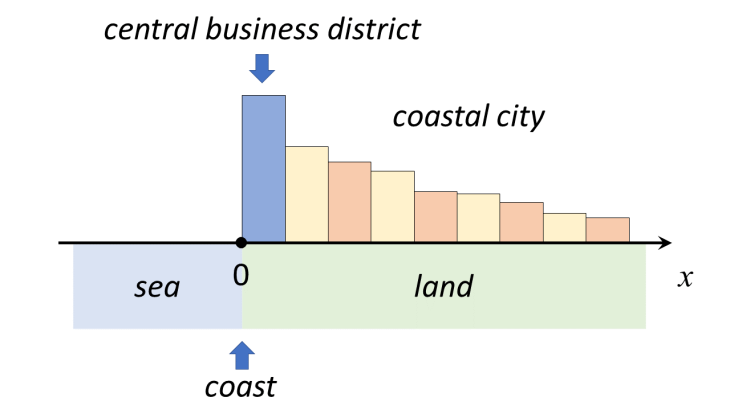Growth-diffusion models of coastal urban development
How does the geography of a coastal area shape the coastal urban dynamics under present and future climate?
To get insights into this question, we are developing in MUCCCS coastal urban growth-diffusion models.
The first step made was to develop one-dimensional (1D) growth-diffusion models simulating the urban population density dynamics. In this simplified representation, the spatial coordinate specifies the distance from a straight coastline inland. The population growth and urbanization rates are modelled in the diffusion framework (including “conventional” diffusion, and also linear and nonlinear growth-diffusion models). Additionally, the maximum entropy principle is applied to one of 1D models considered. This research is described in detail in
Kovalevsky, D.V., Volchenkov, D., Scheffran, J. (2021) Cities on the coast and patterns of movement between population growth and diffusion. Entropy 23(8): 1041; https://doi.org/10.3390/e23081041 (open access)

The geometry of a one-dimensional coastal urban growth-diffusion model. Adapted fromKovalevsky, D.V., Volchenkov, D., Scheffran, J. (2021) Cities on the coast and patterns of movement between population growth and diffusion. Entropy 23(8): 1041
Moving towards modelling a realistic geography of a coastal area, we are currently developing similar models in two-dimensional (2D) space. In 2D models, we are also accounting for stochastic dynamics of urban diffusion. Viewing this modelling from a somewhat different perspective, the developed software implementation of discrete (raster grid) 2D urban diffusion models meets the definition of a cellular automaton.

